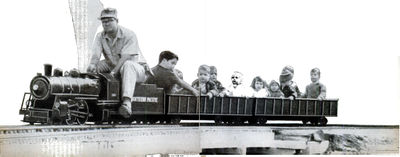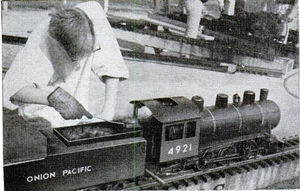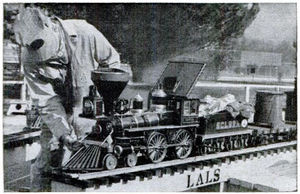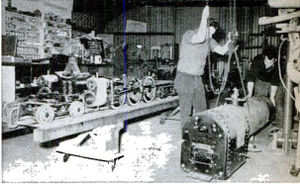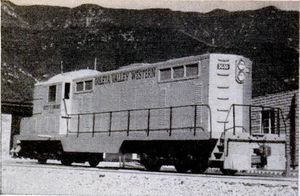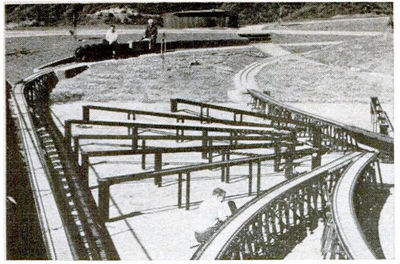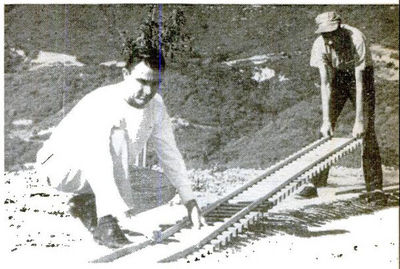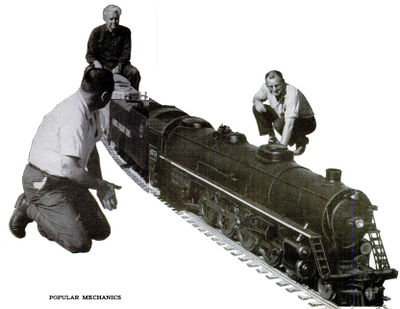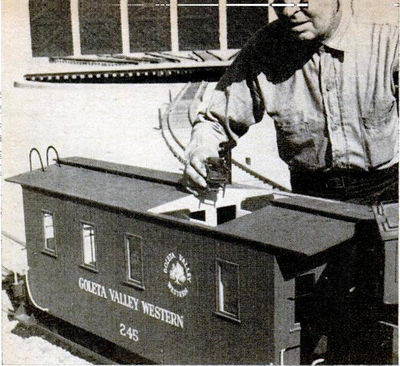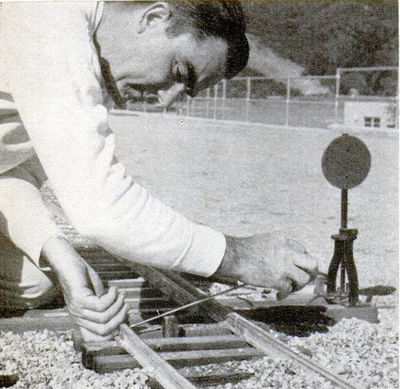Iron Colts in the Back Yard
Jack B. Kemmerer
Popular Mechanics, August 1965
Old 97 rides again! only it's more like .97.
Scaled-down versions of the late and lamented steam locomotives that used to grace the nation's rails--and inspire such Americana as "Casey Jones" and "The Wabash Cannonball"--are chugging out of small roundhouses today, all steamed up and ready to roar at any time.
The price tags on some are enough to scare away millionaires, but railroad buffs are railroad buffs and the tiny toots appeal to a wide cross-section of men who remember B.D. (before diesels) when there was smoke up front, "clickety-clacks" down below, "choo-choo" sounds all around and romance on the rails.
One of the terminals for this new interest in miniaturized systems is the Harpur Locomotive Wokrs in Wilimington, California. Bob Harpur, a railroad buff and model builder from childhood, decided to go professional about five years ago when a friend asked him to scale down an 0-4-0 switch engine. (For the uninitiated, engines are classified according to the number of leading truck wheels, driving wheels and trailing wheels. An 0-4-0 has no leading trucks, two pairs of driving wheels and no trailing trucks.)
Harpur, who started alone with borrowed tools in his father's basement, today has five employees and one of the most complete locomotive works in the world.
Most models are scaled down from accurate blueprints of life-size engines--usually from 1/4 inch to 3 inch scale--almost. Harpur explains that a boiler, for instance, can't be fully scaled own because its walls would be too thin for safety.
But almost everything else is from a real coal fire in the firebox to tiny steam gauges on the boiler.
And they cost money. On standard models--and Harpur has five of them--prices start at $2400 complete for a simplified 1-1/2 inch scale 2-6-0 Mogul, or $1600 in kit form, or $500 for rough castings for a man with skill enough to complete it.
On nonstandard custom models, prices go as high as $35,000 for the 26-foot model of the New York Central's old 4-6-4 Hudson of years gone by.
Customers run the spectrum, from working stiffs to professional people. Walt Disney and musician David Rose, to name two names, are live steamers. Mel Terrill and Seymour Johnson are two more.
Terril, a truck driver, discovers he had cancer not long ago. One lung was removed and he was forced into retirement. Searching for a hobby, and strapped for funds, he bought one of Harpur's casting kits and went to work.
His health picked up immediately. "I had almost given up, but now I've got a new interest in life. My doctor says it's better than medicine."
Johnson, a millionaire in retirement, bought a mountain, leveled it off and is building perhaps the most expensive playground for adults this side of the Playboy Clubs. Two complete railroad systems, in 1-1/2 inch and 3-inch scales, will crisscross one another over five miles of track. Two complete roundhouses and steaming tracks, switchyards, five tunnels and eight trestles will complete the project.
Club members, some from as far away as 500 miles, help Johnson with the construction work on alternate Sundays. When completed, the two railroads will have as many as 50 engines operating.
Actually, the live-steam hobby is quite extensive. There are more than 25 clubs in the United States and most are affiliated with the National Brotherhood of Live Steamers. But, in recent years, their hobby seems to be picking up steam.
Steaming tracks on Seymour F. Johnson's layout are used to get engines up to steam before entering main line. Entire Johnson system will be ready by 1967 season.
Seymour F. Johnson rides astride diesel switch engine as he pushes steam locomotive and train over new section of 1.5 inch scale track to check its accuracy.
